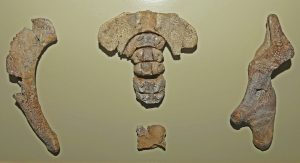On June 16, paleontologists published a scientific article describing a new fossil angel shark genus and species named Cretasquatina americana. Among those paleontologists is former University of Alabama curator of paleontology Dana Ehret. The team used two specimens from the paleontology collection of UA Museums’ Department of Museum Research and Collections. One of those specimens was chosen as the holotype. Holotypes are the most important specimens of paleontological (and biological) collections because species are formally erected using a single holotype per species as the representative of a particular species. The new holotype is now placed in the paleontology type collection.

The two specimens were found at UA Museums Harrell Station Paleontological Site in Dallas County, Alabama, in 1988 and 1992. Here, rocks composed of a mixture of chalk and clay of about 82 million years old are exposed, representing the former ocean bottom. At that time, most of Alabama was covered a shallow ocean teeming with life. Remains of sharks, mosasaurs, turtles, worms, sea urchins, and clams are regularly found at Harrell Station.
The specimens of the new angel shark species consist of different parts of two individual skeletons of the shark, including parts of the jaw, vertebrae, and even a part of the braincase. Some features of the cartilaginous skeleton look like those found in skates and rays, but angel sharks are not directly related to these animals.

Members of the same family, Squatinidae, but from different species are still around today and are found across the globe. They usually live hidden on/in shallow oceans bottoms waiting for prey such as fish, squid, and crustaceans. The environment in Alabama was not very different 82 million years ago.
A PDF of the scientific article is freely accessible.
Written by: Adiel Klompmaker, Curator of Paleontology